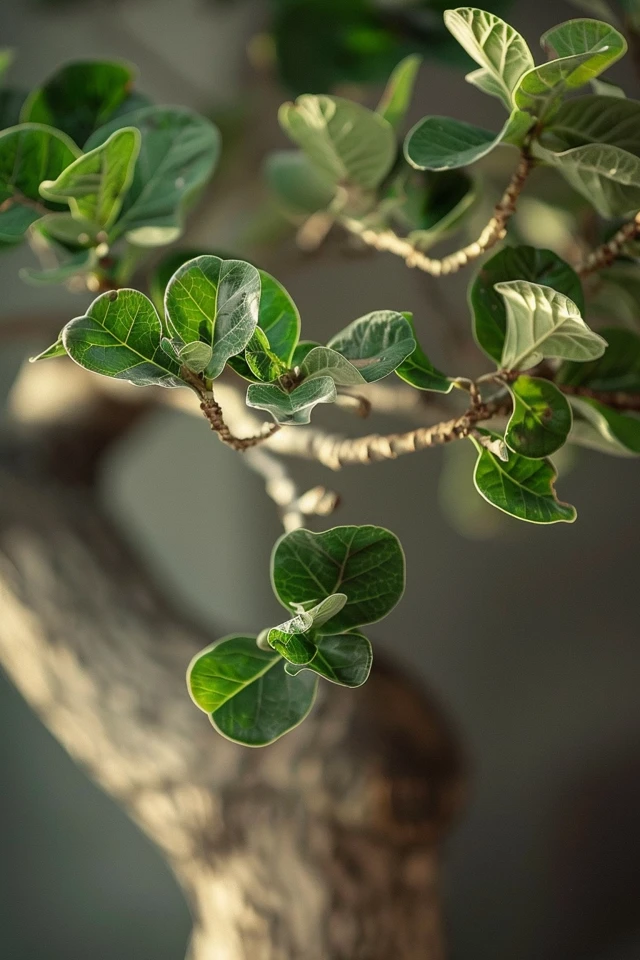If you have a dying fig tree, don’t lose hope! With the right care and rescue techniques, you can revive it and bring it back to life. As a fig tree enthusiast, I have learned valuable methods to save struggling trees and ensure their health and vitality.
One of the most important steps in reviving a fig tree is pruning. By trimming any dead or damaged leaves and stems, you can help redirect the plant’s energy towards new growth. Notching and pinching techniques can also be used to promote branching and shape the tree.
In addition to pruning, addressing diseases and pests is crucial for fig tree care. If you notice brown spots on the leaves, it could be a sign of overwatering or a fungal infection like root rot. Repotting the tree with fresh, well-draining soil and improving drainage can help combat these issues.
Providing proper sunlight, watering, and fertilization are also essential for the overall health and revival of a dying fig tree. Assessing the tree’s soil conditions and repotting it with suitable soil can prevent root rot and promote growth.
So, if you’re worried about your dying fig tree, don’t despair. By following these rescue techniques and providing the right care, you can save your beloved tree and enjoy its bountiful harvest for years to come.

Key Takeaways:
- Pruning is a crucial step in reviving a dying fig tree, as it helps redirect the plant’s energy and promotes new growth.
- Identify and address common issues like overwatering, fungal infections, and pest infestations to ensure the tree’s health and vitality.
- Proper sunlight, watering, and fertilization are essential for the overall health and revival of a dying fig tree.
- Assess the tree’s soil conditions and repot it with well-draining soil to prevent root rot and promote growth.
- By following these rescue techniques and providing the right care, you can save your dying fig tree and enjoy its beauty and delicious fruits.
Common Issues and Solutions for Dying Fig Trees
Dying fig trees can encounter various problems that hinder their growth and survival. By understanding these common issues and implementing the right solutions, you can help revive your struggling fig tree.
Excessive Leaf Loss
One common concern with dying fig trees is excessive leaf loss. This can be caused by factors such as improper acclimation, dry conditions, or insufficient sunlight. To address this issue:
- Ensure the tree is properly acclimated to its environment before planting or transplanting.
- Provide adequate water to prevent the soil from drying out.
- Ensure the tree receives enough sunlight, ideally 6 to 8 hours per day.
Brown Spots on Leaves
Brown spots on fig tree leaves are often a sign of overwatering, which can lead to root rot. To resolve this issue:
- Repot the tree using well-draining soil to improve water drainage.
- Adjust your watering practices to prevent overwatering, ensuring the soil is moist but not waterlogged.
Yellow Leaves
Yellow leaves on a fig tree can indicate various problems, including bacterial infections or a lack of sunlight or nutrients. To address this issue:
- Identify the underlying cause of the yellowing leaves (e.g., infection or nutrient deficiency).
- Make appropriate changes, such as using organic fertilizers or adjusting the tree’s location to provide more sunlight.

Other Problems and Solutions
There are additional issues that may arise with dying fig trees, including insect infections, curled leaves, and white leaves. Here are some treatments and solutions:
Use neem oil, a natural insecticide, to combat insect infestations.
Apply a baking soda solution to control fungal diseases and pests.
Implement proper pest management practices and remove any affected leaves or branches.
By addressing these common issues and providing the right care, you can help save your dying fig tree and promote healthy growth.
Conclusion
To rescue and revive a dying fig tree, it is crucial to employ effective rescue techniques and provide proper care. Pruning the tree by removing dead or damaged leaves and stems helps redirect energy and stimulates new growth. In addition, notching and pinching can shape the tree and encourage branching.
Addressing common issues is also essential for the tree’s revival. Excessive leaf loss, brown spots, yellow leaves, and pest infestations must be promptly addressed to restore the tree’s health. By providing adequate sunlight, proper watering, and fertilization, you can ensure the well-being of your fig tree.
Another vital aspect is fig tree soil management. Assessing the soil conditions and repotting the tree with well-draining soil can prevent root rot and promote overall growth. By following these rescue techniques and implementing proper fig tree care, you can save your dying fig tree and enjoy the beauty of healthy foliage and delicious fruit for years to come.

